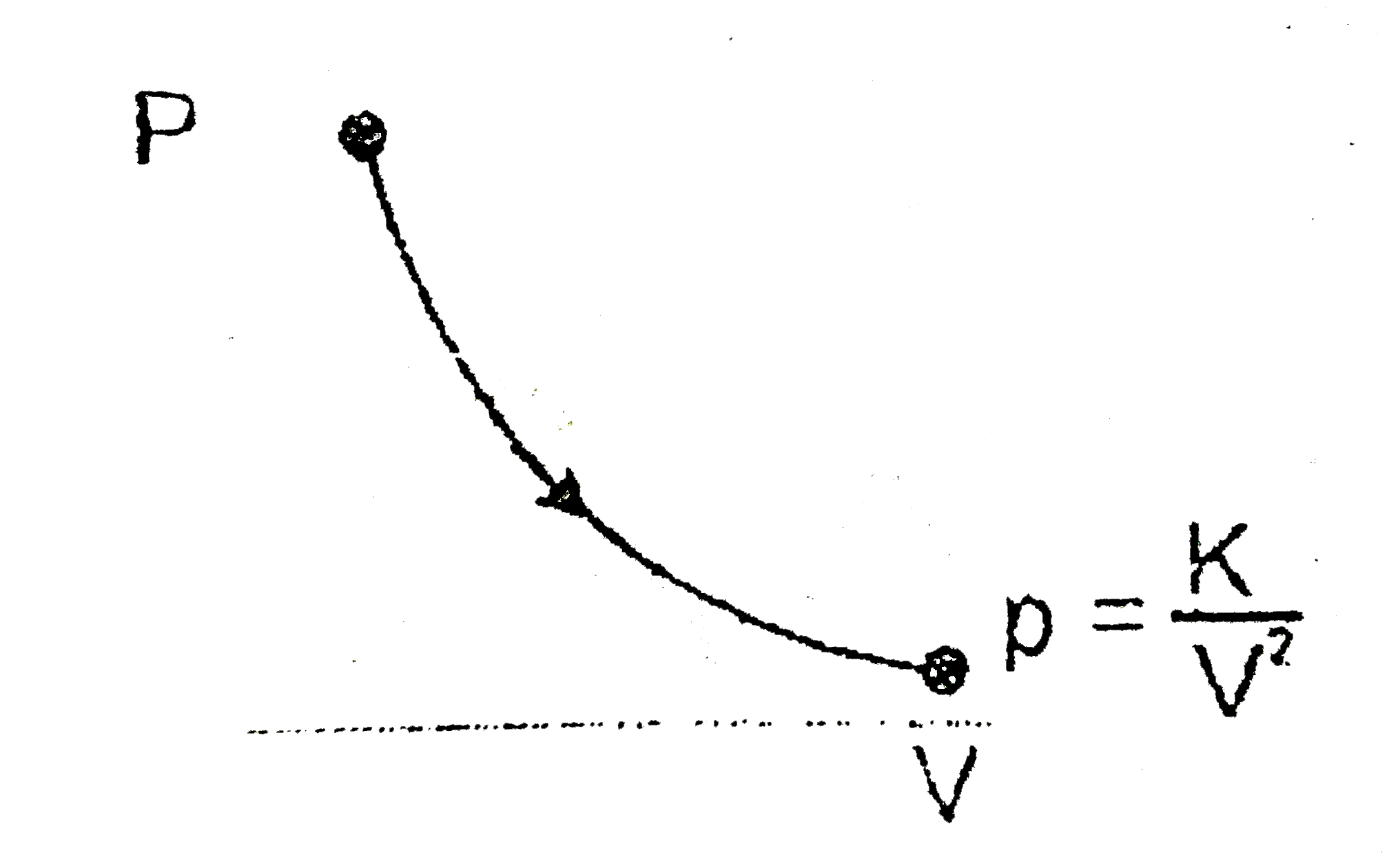The volume of a diatomic gas (γ=7/5) is increased two times in a polytropic process with molar heat capacity C=R. How many times will the rate of collision of molecules against the wall of the vessel be reduced as a result of this process?
The correct Answer is:B, C, D
To solve the problem, we need to determine how many times the rate of collision of molecules against the wall of the vessel is reduced when the volume of a diatomic gas is increased two times in a polytropic process with a given molar heat capacity.
1. Identify Given Values:
- For a diatomic gas, γ=75.
- Molar heat capacity C=R.
- The volume is increased two times: Vf=2Vi.
2. Determine the Polytropic Process Relationship:
- In a polytropic process, the relationship is given by PVx=constant.
- We need to find the value of x using the heat capacity relation:
C=R1−x+Rγ−1
- Substituting C=R and γ=75:
R=R1−x+R75−1
- Simplifying gives:
R=R1−x+5R2
- Rearranging leads to:
1=11−x+52
- This simplifies to:
1−x=23⟹x=53
3. Find the Final Pressure:
- Using the polytropic relation PV53=constant:
- If Vf=2Vi, then:
Pf(2Vi)53=PiV53i
- Rearranging gives:
Pf=Pi⎛⎜
⎜⎝V53i(2Vi)53⎞⎟
⎟⎠=Pi(1253)
4. Calculate the Rate of Collision:
- The rate of collision Z is proportional to the pressure P and the root mean square speed Vrms:
Z∝PVrms
- The Vrms is given by:
Vrms∝√PV
- Therefore, we can express the new Vrms:
Vrms,f=Vrms,i⋅√PfPi⋅√Vi2Vi=Vrms,i⋅√1253⋅√12=Vrms,i⋅1256
5. Final Rate of Collision Calculation:
- Substituting Pf and Vrms,f into the collision rate equation:
Zf∝PfVrms,f=Pi⋅1253Vrms,i⋅1256=Zi⋅1253⋅256=Zi⋅2−53+56=Zi⋅2−106+56=Zi⋅2−56
6. Conclusion:
- The rate of collision is reduced by a factor of 256.
Final Answer:
The rate of collision of molecules against the wall of the vessel is reduced by a factor of 256.
- For a diatomic gas, γ=75.
- Molar heat capacity C=R.
- The volume is increased two times: Vf=2Vi.
- In a polytropic process, the relationship is given by PVx=constant.
- We need to find the value of x using the heat capacity relation:
C=R1−x+Rγ−1
- Substituting C=R and γ=75:
R=R1−x+R75−1
- Simplifying gives:
R=R1−x+5R2
- Rearranging leads to:
1=11−x+52
- This simplifies to:
1−x=23⟹x=53
- Using the polytropic relation PV53=constant:
- If Vf=2Vi, then:
Pf(2Vi)53=PiV53i
- Rearranging gives:
Pf=Pi⎛⎜
⎜⎝V53i(2Vi)53⎞⎟
⎟⎠=Pi(1253)
- The rate of collision Z is proportional to the pressure P and the root mean square speed Vrms:
Z∝PVrms
- The Vrms is given by:
Vrms∝√PV
- Therefore, we can express the new Vrms:
Vrms,f=Vrms,i⋅√PfPi⋅√Vi2Vi=Vrms,i⋅√1253⋅√12=Vrms,i⋅1256
- Substituting Pf and Vrms,f into the collision rate equation:
Zf∝PfVrms,f=Pi⋅1253Vrms,i⋅1256=Zi⋅1253⋅256=Zi⋅2−53+56=Zi⋅2−106+56=Zi⋅2−56
- The rate of collision is reduced by a factor of 256.
The rate of collision of molecules against the wall of the vessel is reduced by a factor of 256.
Topper's Solved these Questions
- BOOK - DC PANDEY ENGLISHCHAPTER - THERMOMETRY,THERMAL EXPANSION & KINETIC THEORY OF GASESEXERCISE - Level 2 More Than One Correct7videos
THERMOMETRY,THERMAL EXPANSION & KINETIC THEORY OF GASES
- BOOK - DC PANDEY ENGLISHCHAPTER - THERMOMETRY THERMAL EXPANSION AND KINETIC THEORY OF GASESEXERCISE - Medical entrance gallary30videos
THERMOMETRY THERMAL EXPANSION AND KINETIC THEORY OF GASES
- BOOK - DC PANDEY ENGLISHCHAPTER - UNIT AND DIMENSIONSEXERCISE - Assertion And Reason2videos
UNIT AND DIMENSIONS
Similar Questions
Knowledge Check
- Question 1 - Select One
A gas has molar heat capacity C=37.55Jmole−1K−1, in the process PT = constant, find the number of degree of freedom of the molecules of the gas.
A6B3C1D5
Find equation of process for which heat capacity is C=72R for a mono-atomic gas.
View SolutionTemperature of two moles of a monoatomic gas is increased by 300 K in the process p∝V.
(a) Find molar heat capacity of the gas in the given process.
(b) Find heat given to the gas in that.View Solutionan ideal diatomic gas undergoes a polytropic process described by the equation P√V=constant . The molar heat capacity of the gas during this process is
View SolutionTemperature of two moles of a monoatomic gas is increased by 300K in the process p∝V. Find
(a) molar heat capacity of the gas in the given process
(b) heat required in the given process.View SolutionA gas undergoes a process such that p∝1T. If the molar heat capacity for this process is C=33.24J/mol−K, find the degree of freedom of the molecules of the gas.
View SolutionIn a thermodynamic process on an ideal diatomic gas, work done by the gas is η times the heat supplied (η<1). The molar heat capacity of the gas for the process is
View SolutionThe molar heat capacity for the process shown in fig. is
 View Solution
View Solution

